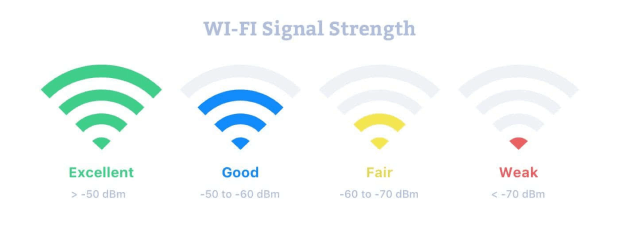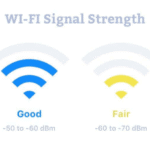
Nicaraguans selling their homes rarely lock themselves into an agreement with one party wanting to sell their land, house, or commercial building. The Property may appear on multiple real estate company websites and be advertised online by numerous different people. More confusing, the prices advertised may vary for the same house, sometimes by tens of thousands of dollars. If you want to sell something, the assumption is that the more people trying to sell it, the better. And by more people that can be realtors, the owner themselves, their family and friends, a neighbor, or a horse-drawn carriage driver. This seems chaotic to a foreigner shopping for a retirement or vacation home, but it makes perfect sense to Nicaraguans. Without an MLS service that allows numerous realtors to show prospective buyers a listed property, letting everyone try to sell a property seems to be the best way to get exposure.
Another misconception foreign purchasers have when buying real estate in Nicaragua is that the seller is paying the real estate agent.
This is sometimes the case, but the buyer may be asked to pay the commission even when it is not. Yes, this is legal in Nicaragua. In fact, not only could there be a commission paid by the seller and buyer, but the real estate agent may have added an amount to what the seller wants in their hand. This, too, is legal. The worst-case scenario is that the seller wants US$50,000 for their home. The sellers offer anyone selling the home US$1000 or a percentage. The real estate selling agent advertises the home for US$59,900, allowing for negotiating room. A buyer settles on US$55,000 but is told that in Nicaragua, the buyer pays the commission. Not actually the truth, but common enough that people think it’s a rule. The requested commission can be anything up to 10%, or it can be a flat fee. Once all is said and done, the buyer agrees to purchase the property for US$55,000. In a case such as this, the ‘agent’ will insist on a nonrefundable US$5000 down payment. At closing, the seller receives the US$50,000 that they wanted, and the selling agent pockets the rest of the NASA launch schedule 2016
I know of purchasers who handed a ‘realtor’ US$65.000 to purchase a 3-acre farm with a small house on the property. The ‘realtor’ then went to the property owner and paid him US$20,000 to buy the land. It gets worse… the ‘realtor’ never bothered to make the title transfer until the buyer discovered he was not the owner when he tried to pay long-overdue taxes. In the end, the property was purchased by a developer for a little more than the original US$65,000, but 8 years of appreciation later. In another case, Europeans purchased a home and overpaid US$85,000. Of course, basing their offer on the European real estate values they knew, they assumed they were getting a bargain. The ‘realtor’ pocketed the US$85,000 and a commission he charged the buyer as well. Again, perfectly legal in Nicaragua… so caveat emptor.
Related Articles :
- Real Estate Submarkets and Their Characteristics
- November Proves a Strong Month for Local Real Estate Marketplace
- ‘I will resign him before God’: Berlin suspect’s mom pleads for news of a son
- SIX Characteristics of Successful Real Estate Investors
- Financial savings protection restriction to head back as much as £85,000
The way to navigate what foreigners view as market chaos is to use a knowledgeable real estate consultant to find a property you want, negotiate the price, terms, and conditions, conduct the necessary due diligence, validate the title and survey, and so on. This is a fee-based service, but far less expensive than a percentage sales commission and far, far less than a costly mistake would be. One such service is Nica Investments, a real estate consultancy that assists foreign investors purchasing real estate or businesses in Nicaragua rocket launch today live.
Thanks to a slew of latest reforms, the unsold stock throughout the United States launches of America’s top cities sees
a faster decline as challenge launches have decreased. But with the real market improving, home hunters must brace for an upward push in property costs.
However, the imminent festive season may see several launches in the months to come.
“The first zone of this economic marks a reported low for devices launched throughout India, at the same time as sales continue to outdo new devices getting constructed in a quarter for the sixth consecutive quarter. A total of over 20,000 new gadgets had been released throughout India’s top seven towns in the course of the region, even as the corresponding variety was barely higher at over 26,000 devices within the fourth sector, last year,” said Anuj Puri, chairman of Anarock Property Consultants.
Pankaj Kapoor, coping with a director of Liases Foras, agrees. “The overall wide variety of project launches has come down during these 12 months compared to the previous couple of years. On the other hand, unsold inventory in tier-I towns has marginally declined, too. Inventory throughout tier-I cities reduced to 44 months, from 47 inside the preceding area. A decline of 6% additionally means that the market sentiment is improving.”
The marketplace is enhancing despite demonetization, which is believed to have negatively impacted realty sales.
Secondly, the implementation of the Real Estate (Regulation and Development) Act, 2016, in some states and the goods and services tax, too, has acted as a catalyst.
“Roll out of RERA and GST can have a brief-term effect in the form of delay of launches because of compliance methods. However, there are medium- and long-term advantages thereafter,” a senior enterprise player informed DNA Money.
Liaise Foras’s trendy residential marketplace report states that 38% of new deliveries are recorded in the value bracket
of Rs 50 lakh to Rs 1 crore, followed by Rs 25 lakh to Rs 50 lakh, which contributed 28%. Mumbai Metropolitan Region (MMR) contributed the maximum new deliveries across the top 8 tier-I cities at 35%, while Kolkata contributed the bottom with the unsold stock all through April-June 2017 standing at nine.53 lakh compared to 9. Fifty-one lakh devices within the previous region. Across tier-I cities, the stock marginally declined thtoero.Three%. Pune witnessed a 4% fall, observed via Ahmedabad and Bengaluru at three%. %Alternatively, Chennai saw a growth of 9% in unsold stock, followed by Hyderabad at 4% and MMR at 2%.
On the pricing front, if the quarter-on-sector weighted average price is compared to the eight cities, there is a boom via a percent. But, if price comparison is executed of each of the 8 cities, fees declined by 2% in Hyderabad, accompanied with the aid of Chennai and NCR at 1%.
The fashion of depleting unsold inventory is expected to continue in the wait-and-watch mode adopted by builders on RERA implementation. Several states are buying inform the Rera regulation, making developers mamarketheir present under-production projects in such states.
Among all of the 3 asset classes – residential, workplace, and retail, the best beneath-creation projects are within the residential asset class at eighty-five%.












